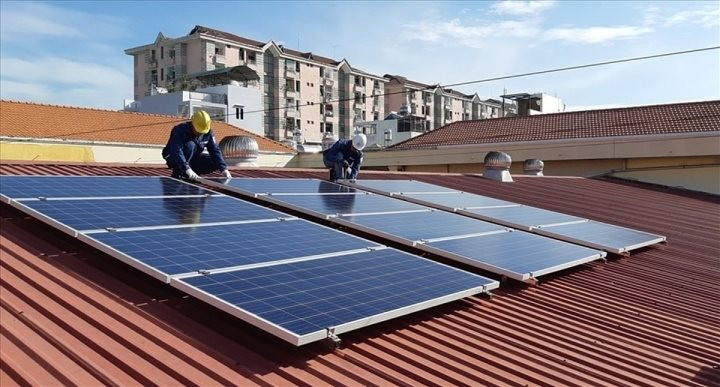Solar panels are poised to cover rooftops across Vietnam now that Southeast Asia's top generator of solar energy and a major manufacturer of PV cells, targets 50% of homes and offices to have panels by 2030. This is also to strengthen the power supply.
Trinh Can was tired of the blackouts that often roll through Ho Chi Minh City. With power prices inching ever skyward, he finally took action this summer by installing solar panels.
"This is more stable," he said. "And, of course, I thought about the environment too."
According to the trade ministry's website last year, more than 100,000 rooftops in Vietnam had solar panels. And with this year's scorching summer weather highlighting the risk of energy crunch, more people are turning to solar to reduce risk.

People in Vietnam are concerned about the risk of power outages, leading more individuals to install solar panels in their homes. (Photo: EVN)
A home solar system can cost between $2,000 and $5,000, once installed, it would cover most of a home's electricity needs, excluding battery storage and maintenance.
"You just want to go home, flip a switch and things turn on," said Tran Tuan Anh, CEO of Solano, a startup that assists households install panels. "In a similar way, we want to offer this kind of worry-free experience for customers."
McKinsey estimates that due to its location, this sunny and mostly tropical country has the potential for 380 GW of capacity, which is well above the government’s goal of roughly 70 GW of solar capacity.
Solar farm development surged after Hanoi introduced above-market rates paid by national grid operator, Electricity Vietnam, peaking in 2019. But with the network overloaded, officials are now encouraging homeowners and offices to install off-grid solar panels for private use.
Coal-heavy Vietnam is drafting tax breaks and perks to encourage owners to power their properties with solar panels, reducing reliance on the outdated grid and the frequency of outages.
The draft is part of the government's Power Development Plan 8, which targets 80% renewable energy usage and net-zero carbon emissions by 2050.
Vietnam must replace fossil fuels with solar and wind power to comply with the Just Energy Transition Partnership, a $15.5 billion aid program from G7. JETP has been slow to lift off, while power shortages have hit provinces where Apple and Samsung products are made, as well as households like Can's.
Southeast Asia has become a major producer of PV cells. It was also the biggest exporter of PV cells to the U.S. in 2023 Q1, after Washington banned their import from China over allegations of forced labor, according to S&P Global.








